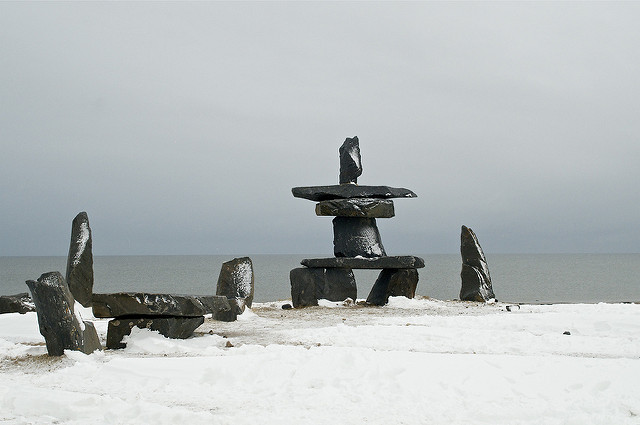Those of us who were hoping that the Throne Speech would have details about a strategy for Manitoba’s North were disappointed. There seems to be a deliberate effort to not mention the Port of Churchill or the Hudson Bay Rail Line in any mention of the North. The absence is odd given the necessity of both for the regional economy and in the case of Churchill’s deep-water port, Arctic sovereignty.
The Town of Churchill and all the communities on the Hudson Bay Line north from Opaskwayak Cree Nation and The Pas formed a coalition called The Northern Delegation. It is dealing with the fallout from the port closure and uncertainty around OminTRAX’s running of the rail line.
We have no indication if the Province plans to help the delegation or whether any support would be of the kind the region needs. There is a role for provincial and federal governments to play in regional development, but they need to move away from throwing public money at private corporations that do not have a meaningful commitment to the North’s people and land.
We need to consider the northern economy in the context of its predominately Indigenous population which is diverse, young and growing faster than the non-Indigenous population. Besides the large number of First Nations in the North, the urban Indigenous population is also growing. Thompson’s population is 36 per cent Indigenous; The Pas’ and Churchill’s populations are roughly half Indigenous.
Historically, whether it be through hydro, mining or logging, First Nations rarely benefitted from such development and were not even consulted when many megaprojects were planned and implemented — even though the projects destroyed traditional lands and lives. Prior to 1962, Thompson’s INCO (now Vale) explicitly forbade the hiring of Indigenous workers. But things are slowly changing.
The partnership between Nisichawayasihk Cree Nation (NCN) and Manitoba Hydro during construction of the Wuskwatim Dam was an important first in Canada. NCN has been able to benefit from development agreements with Manitoba Hydro and flood compensation funds from the Northern Flood Agreement. It has invested in community-based economic initiatives, some located in the newly formed Urban Reserve in nearby Thompson.
NCN Development Corporation also owns a variety of businesses in NCN ranging from a building supplies store, food store, gas station, restaurant and even a radio and TV station.
NCN has used resources inherited from Manitoba Hydro’s Wuskwatim Dam project to run the Ataoskiwin Training and Employment Centre (ATEC) Inc. Housed in a new and state-of-the-art building, ATEC provides specialized training to NCN residents, many of whom have dropped out of school and/or have never held a job. The ATEC model has many features that are important for Indigenous jobseekers and the employers who wish to hire them. It includes an extensive intake process to determine trainees’ education and employment interests, education levels and upgrading needs, as well as other social and cultural needs. One of its many successful programs trains NCN youth to build much-needed housing and puts them to work so they can earn their Red Seal accreditation.
This sort of training and development could be expanded. Many First Nations need new homes, so a construction initiative — including provision of construction materials — could be turned into a regional development plan with wide-reaching benefits. Over time such development could even feed into the Port of Churchill and keep the train running more often as it moves people and goods between the communities along the track.
There is no shortage of similar ideas in Manitoba’s North. Manitoba Keewatinowi Okimakanak Inc. (MKO) has a 10-point plan for northern economic development that both the federal and provincial governments should consider. The plan is community driven and turns challenges, such as the high diabetes rate and lack of affordable, healthy food into job-creation projects that will make First Nation communities more self-sufficient. Such initiatives, many spearheaded by Aki Energy (an Indigenous owned and run social enterprise), have already taken shape in other First Nations.
MKO’s economic plan also embraces alternative green energy. If the government were to modernize Manitoba Hydro to include biomass (woodchips) to heat new homes, and convert existing homes, it would open up opportunities. And where better to source this renewable fuel than in and around The Pas? European demand for biomass is commanding premium prices so product could also be shipped by rail through the Port of Churchill. Could government help with a plan to see an Indigenous enterprise provide woodchips to replace imported oil? This plan would create jobs, be eligible for emission credits, and possibly be cost-competitive. A viable model to subsidize conversion to more affordable geo-thermal, while training and employing local workers, already exists with Manitoba Hydro and Fisher River Cree Nation.
Before the Throne Speech, the Province’s only response to the northern crisis was a $25,000 grant for tourism development and a pension-plan payment exemption for a foreign company to take over the Tolko mill. Yet the Aki Energy and NCN experiences shows that long-term investment in community-led initiatives and partnerships with government entities like Manitoba Hydro can build local capacity and healthier communities. The Keeyask project under construction with four adjacent First Nations offers such an opportunity, one that must not be squandered.
Hopefully there’s more going on behind the scenes than the vague ideas in the Throne Speech, and the Northern Delegation and northern communities get the kind of support they need.
Lynne Fernandez holds the Errol Black Chair in Labour Issues at the Canadian Centre for Policy Alternatives MB. For more information and analysis please see the report “It’s time to Give Back to Manitoba’s North” available here.
Photo: Valerie/flickr
Like this article? rabble is reader-supported journalism.



